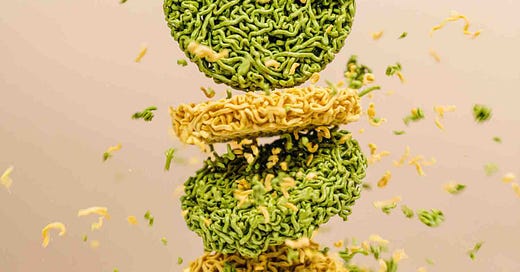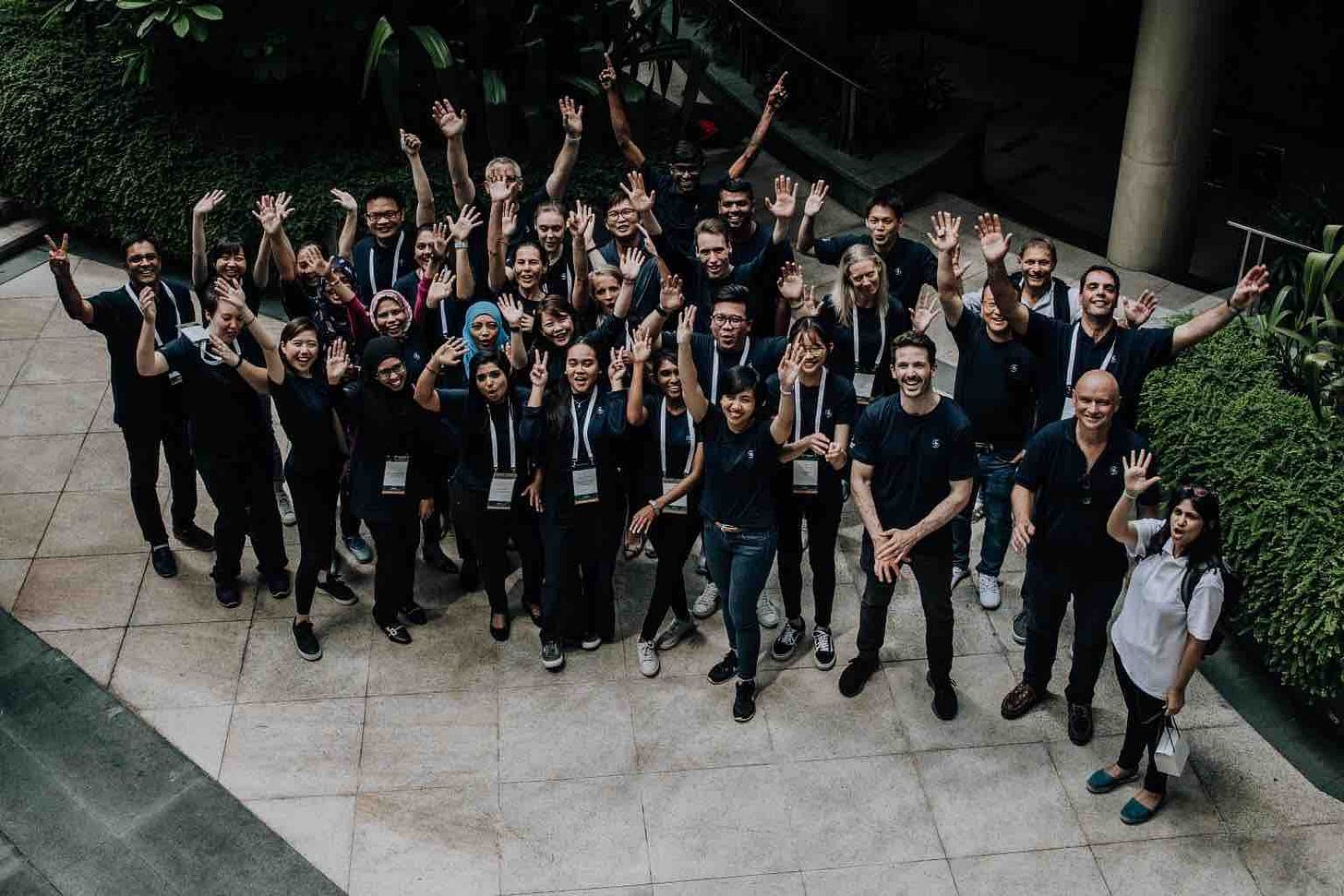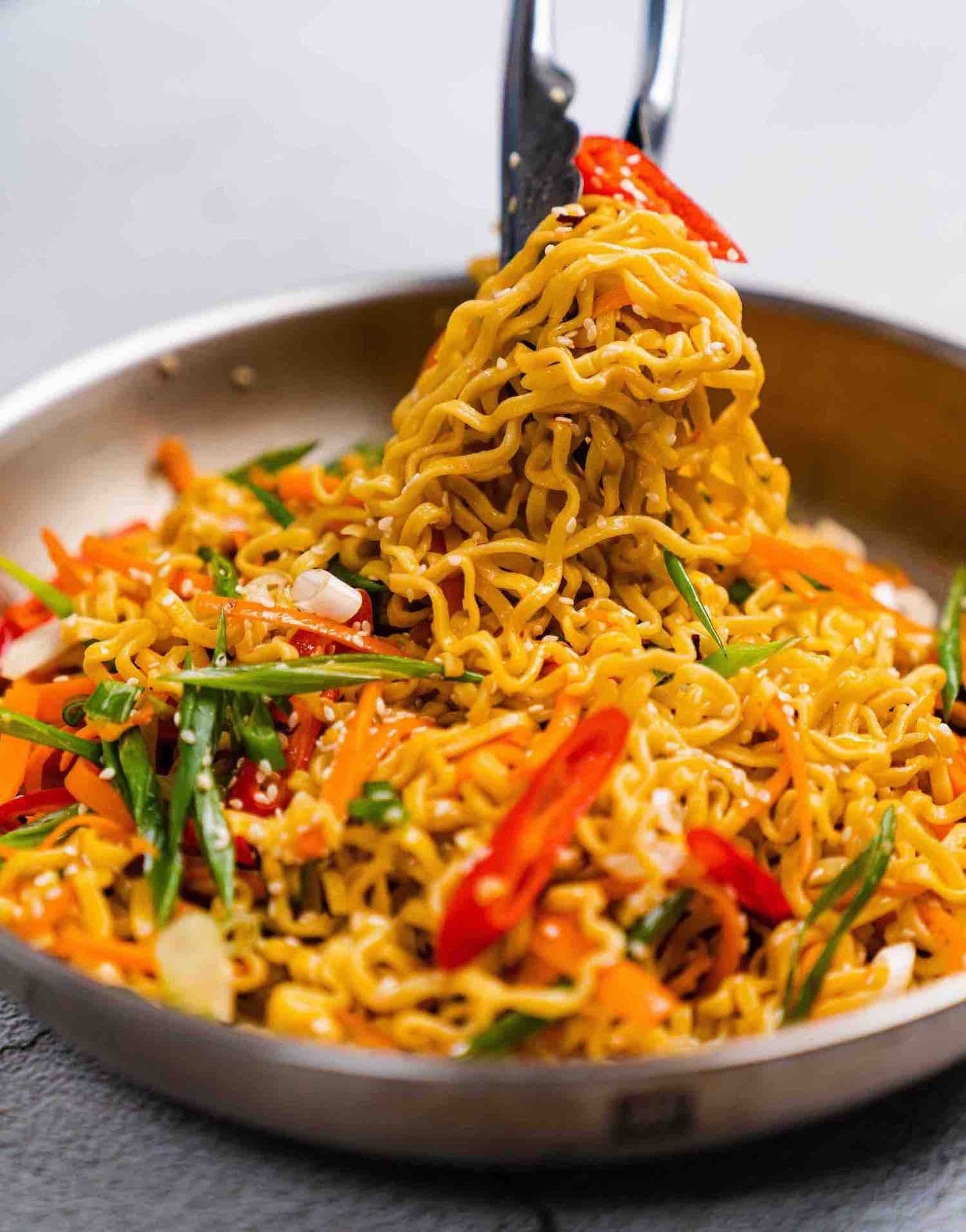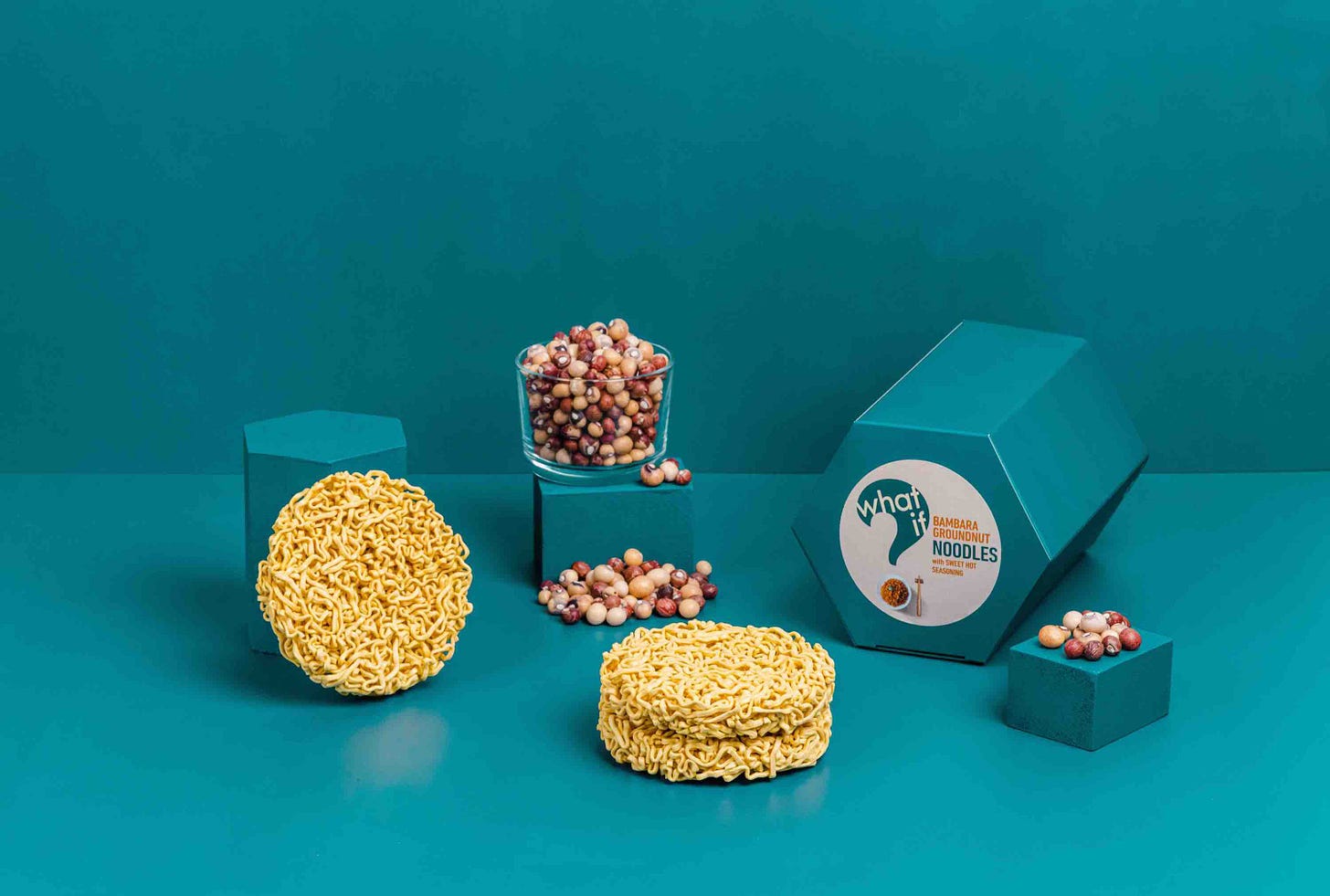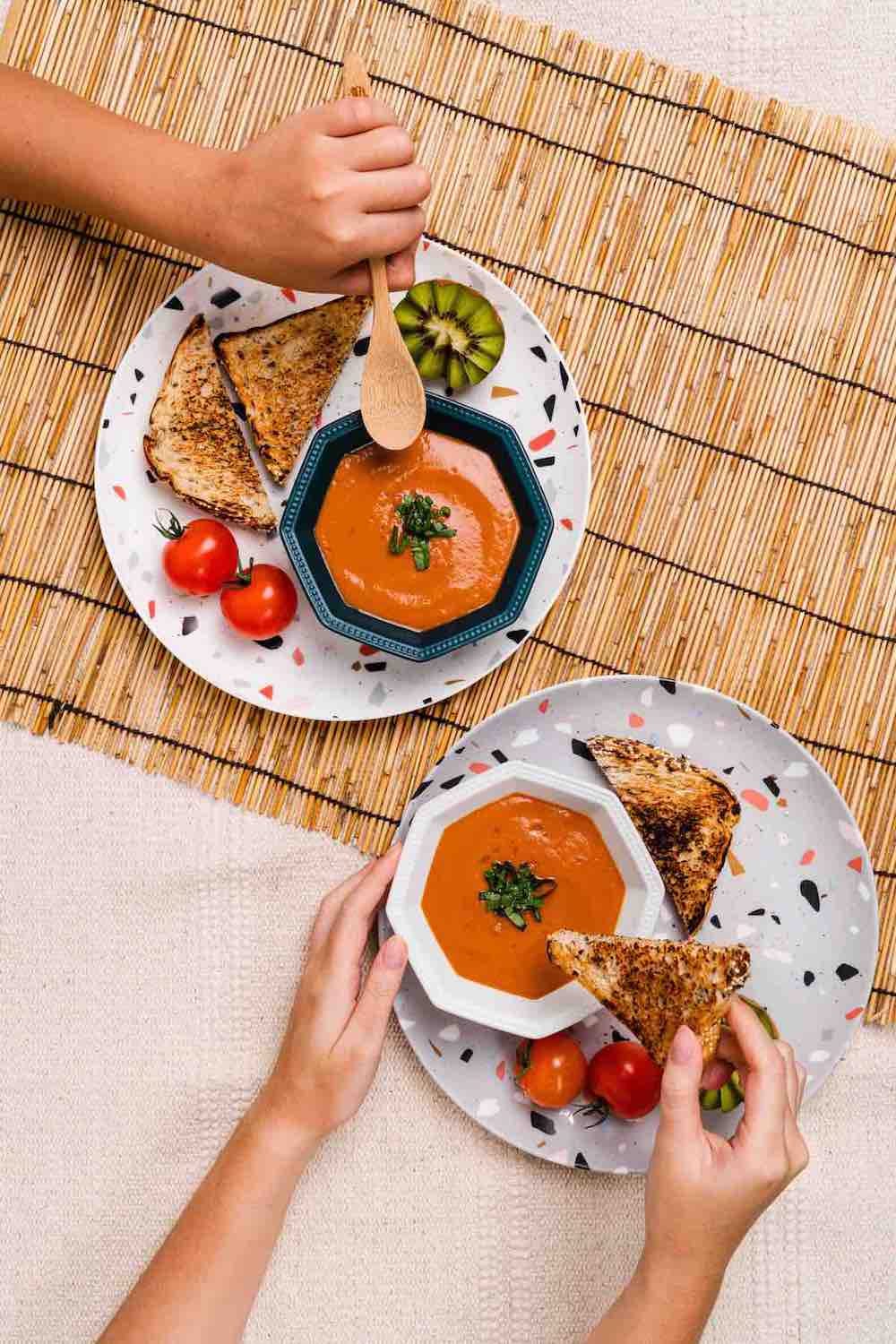These noodles are healthy, high quality and eco-friendly
Christoph Langwallner of WhatIF Foods on how they made this product possible
What if instant noodles could actually be good for you and the planet too?
What if they’re plant-based, free from preservatives and artificial colours and sweeteners, and created with Future Fit crops, which are nutrient-rich, sturdy and easy to grow in tough climates and soil conditions, and beneficial to the livelihoods of local communities and the environment?
What if, indeed.
Well, not only is this idea possible, it’s doable. In fact, these instant noodles already exist. Thanks to WhatIF Foods, they are now available for us to enjoy on their own or to add to our meals. Plus they aren’t deep-fried – and they might give your favourite brand a run for their money!
Click here to shop and to get more information. (Try their Taster Box and Bundles.)
To know more about WhatIF Foods and their story, read on.
So what if…?
Based in Singapore, WhatIF Foods is the consumer brand launched by food tech company NamZ. They offer healthy, sustainable, and ethically made food products such as noodles, shakes and soups (there’s more to come).
Their instant noodles are made from Future Fit crops such as the Bambara groundnut, which is high in protein; it also contains more fibre and less fat than other popular instant noodle brands. Their shakes are natural and lower in sugar (as per market reference), while their soups are low in sodium.
Asking themselves “What if…?” has led founder and CEO, Christoph Langwallner, and his team to some pretty cool discoveries.
After all, “What if…?” speaks of potential and endless possibilities.
“Our story started with us asking ourselves, ‘What if…?’” Chris relates.
“We were looking at the way the industry produced instant noodles, which is a hearty and familial convenience food that is consumed in billions of portions every year. We were surprised by how unhealthy they are – they are deep-fried. That is billions of portions of instant noodles with poor nutritional values consumed every year.
“And so we asked ourselves: ‘What if…?’
“First, it was: ‘What if we could find a way to make instant noodles healthy?’ Then the question became: ‘What if eating noodles was healthy and good for the planet?’ That’s still not good enough. We asked ourselves again: ‘What if noodles could do all of these things, and uplift farming communities?’
“At every step of our journey, asking ourselves ‘What if…?’ has led us to a better vision of what the future of food could be. And so not only are our instant noodles today healthier for you, they are also good for the planet, and they empower smallholder farming communities.
“And it wouldn’t be the last time we ask ourselves this question,” he continues.
“Asking ‘What if…?’ ensures that we will always evaluate where we are, only to create a better vision of where we can be. For example, although our packaging has been created to be recyclable, we are currently looking to improve it. We are looking to explore alternative materials to improve our ecological footprint, and I cannot wait to do this as soon as possible.
“We hope to expand this circle of questioning to our consumers as well, and for them to also ask themselves ‘What if…?’ This is the reason we have chosen WhatIF as our brand name, and the question mark as our logo: to have a conversation with you.”
Instant can be a plus
WhatIF Foods has made instant noodles a healthy, guilt-free, and even eco-friendly dish without sacrificing on taste.
It certainly gives a whole new meaning to the word “instant”. It also makes you wonder how the team now sees and defines the word.
“Urbanisation is here to stay,” answers Chris. “With rising populations and a majority of such populations moving into urban life with busy lifestyles, there is a scale back of the traditional elaborate kitchen, and people are becoming more and more time-poor.
“In this context, ‘instant’ food is about convenience, ease and efficiency. But being ‘instant’ is not enough of an answer to our generational shift. Urban life has also brought on a need for convenient nutrition, staying healthy, and sustaining our immune systems with little effort and time. And so ‘instant’ foods must go hand in hand with nutrition, or more holistically, nourishment. Instant food is convenient nutrition. It is nutritious food in convenient form.
“There is another relentless need, however – that is the need for our food to ensure fair profits for all and to take great care of the environment around us simultaneously. And so ‘instant’ food has a new benchmark: It is not only about being convenient, it is about nutritious foods that at once nourish us and our planet. This is my definition.”
Instant vs quick
“But let’s also not mistake instant food for its function as ‘quick meals’,” Chris adds.
“Sure, they are quicker to prepare, but just as they are a part of your fastest meals, they can also be a part of your most elaborate meals. With WhatIF Foods, you can have a three-minute breakfast shake ready on the go, make noodles your five-minute snack, or allow these nutritious foods to be a part of your complex two-hour meal prep, like with one of our employees who enjoys making noodle soups with a long stewing time.
“Let’s look at the time/occasion matrix – how long it takes to prepare for any occasion in a day when we would eat. Breakfast might take 15 minutes, lunch 30 minutes, snacking maybe 10, and dinner a good hour for elaborate meals. This time/occasion matrix is different for everyone, and everyone has different occasions in a day when they would eat; but the trend is that the average time-to-prepare is decreasing for everyone. That is where we are looking to support: how to supply to the occasions where people experience time constraints without sacrificing on taste and nutrition, or exceeding our planetary boundaries.
“There is also much versatility with our foods: be it a satiating meal with good nutritional value ready in five minutes for an office lunch; a fun way of getting your children to eat greens; or soups that would also make for good savoury recovery meals after an intense workout (it does change from our usual sweet protein drinks)… They also help us reach our five portions of fruits and veggies a day more easily.
“All in all, ‘instant’ in instant food is about having nutrition conveniently. We just like to do it without compromising on the well-being of our planet and the people growing our food.”
There are four more pressing questions, though
Chris has already given us a lot to think about, but then that’s just the start. You didn’t think it would end with one “What if…?” now, did you?
If it were up to Chris and WhatIF Foods, there are other important issues that need to be addressed… and answered. Do you find yourself having these same queries? He invites us to dig a little deeper.
#1 What if we diversified our food source with nutritious and climate change-resilient crops (what we call Future Fit crops)?
“The lack of biodiversity in traditional farming is degrading our lands and stripping the soil of diversity,” he observes.
“We could support our currently degrading arable lands, and help remediate and rejuvenate the topsoil with Bambara groundnuts, thereby helping to safeguard our farmers from turbulent climates predicted for the future.”
#2 What if our food environment was not so obesogenic? What if our favourite comfort foods actually nourish us? What if we can make tasty convenient foods nutrient-dense?
“This lack of diversity in our food system means our foods are stripped of nutrients, and additives are added in for a longer shelf life. Our food system has allowed for obesity and nutrient deficiency to co-exist, and for non-communicable diseases to become the norm (I recommend that you read our piece on Medium here).
“We have cut out the need for deep-frying in instant noodles. This reduces the fat content in our noodles by more than 55% compared to other products in the market. The lack of deep-frying also means we cut on the amount of oil used in the process, thereby alleviating the burden of deforestation in producing it.
“Lastly, without high heat exposure, we can actually retain the nutritive properties of the Future Fit crops, which are also nutrient-rich to truly nourish us. What you end up with is tasty, guilt-free comfort foods.”
#3 What if we could rearrange the food system in a way where the farmers are closer to the end consumer?
“The current food system, with a long line of intermediary stakeholders between the farmers and the end consumer, puts farmers in very poor bargaining powers. This poor power position is worsened with the increased harvest losses brought forth by the impact of climate change,” Chris explains.
“We are working hard to establish a direct relationship with farming communities in West Africa, where we are currently sourcing our Bambara groundnuts. This would allow the farmers to capture more of the value created.
“Instead of buying on demand, we have decided to secure and purchase a production of 75 tonnes of Bambara groundnuts and carry the risk for our farmers. Our goal is to have our food experienced 8 million times by the end of 2021, because then, we know we can continue sustaining the impact we have on our farmers and in growing more crops to diversify our food source.”
#4 What if we could bridge a gap?
“I have given much thought to what is the intent-behaviour gap: People want to be healthy, but may act in ways which contradict their intent. This is not a criticism. We are bound by what is accessible to us. And healthy, tasty, convenient foods have not been widely present. What if we could bridge this gap? Let’s analyse this a bit deeper,” Chris urges.
“Increasingly, many consumers are disillusioned by the greenwashing presented in our market, and they become cynical over what is offered out there today. There is an erosion of trust in businesses, information asymmetries, as well as a lack of access to good choices (affordability is a big factor). These factors hinder us from adopting behaviours that we deem to be good.
“Yet our motivation for making an impact is stronger than ever. Look around you – we are at a pivotal moment. A large majority of people worry about the health of the planet, inequality, our health, injustices… And so value systems are changing fundamentally. We are no longer afraid to demand change when we see injustice. And we need a system that reflects this change in values.
“What we are doing at WhatIF Foods is to take away your sustainability and well-being headache and replace it with tasty, convenient and accessible foods that drive good impact for our planet, communities and your well-being. Put simply, we are making doing good easy (and tasty). Bridging the gap, if you will.
“What we have found so far is that the mission of changing our food system for the better is not so distant from consumers. People take notice, and people care about our environment as well as their health and being economically just to the people who grow our food, contrary to popular belief. And people are craving for change. I hope the younger generations will not be afraid to take a stand to do what is right.”
Now it’s our turn
Can you also think of other “What if…?” scenarios?
Just like Chris and WhatIF Foods, maybe we should always ask ourselves “What if…?” too. It might take us far.
“The question serves as a reminder to always assess the status quo. The question is imaginative, it begs us to envision a better version of what the status quo is. It is about unravelling the laws that define our current systems, challenging them, and breaking the rules in doing so in order to create a better future for food,” Chris stresses.
“Our logo and the question mark are meant to spark this internal conversation in each of us, and to invite ourselves on a thought-provoking journey. We hope we can inspire consumers to ask questions, to start having dialogues with the stakeholders, and to start pondering ‘What if…?’ whenever they perceive a flaw in the status quo.”
Chris shares one last tip to help us stay hopeful, curious, and aware about food issues and the food we eat (especially now that we’re going through a pandemic and tough times).
“Follow the Nutritional Paradox – it is an NGO that encourages the adoption of diverse crops in our food system, enhancing agrobiodiversity, in order to support ecosystems and communities alike. You can find it here,” he suggests.
“The Food System Vision Prize by The Rockefeller Foundation is also a good source to stay close to this topic.”
Now all together (while we snack on their instant noodles): “What if…?”
For more on WhatIF Foods and to join in on the conversation on the future of food, check out their site, Instagram and LinkedIn.
PLUS: Get 20% off WhatIF Foods when you use the discount code charmed20 at checkout. (Note: This is an affiliate link.)
“Stay up to date, stay close to the industry, but question the direction it is taking. Be critical, so that we can all emerge better. In other words, ask yourself ‘What if…?’”

